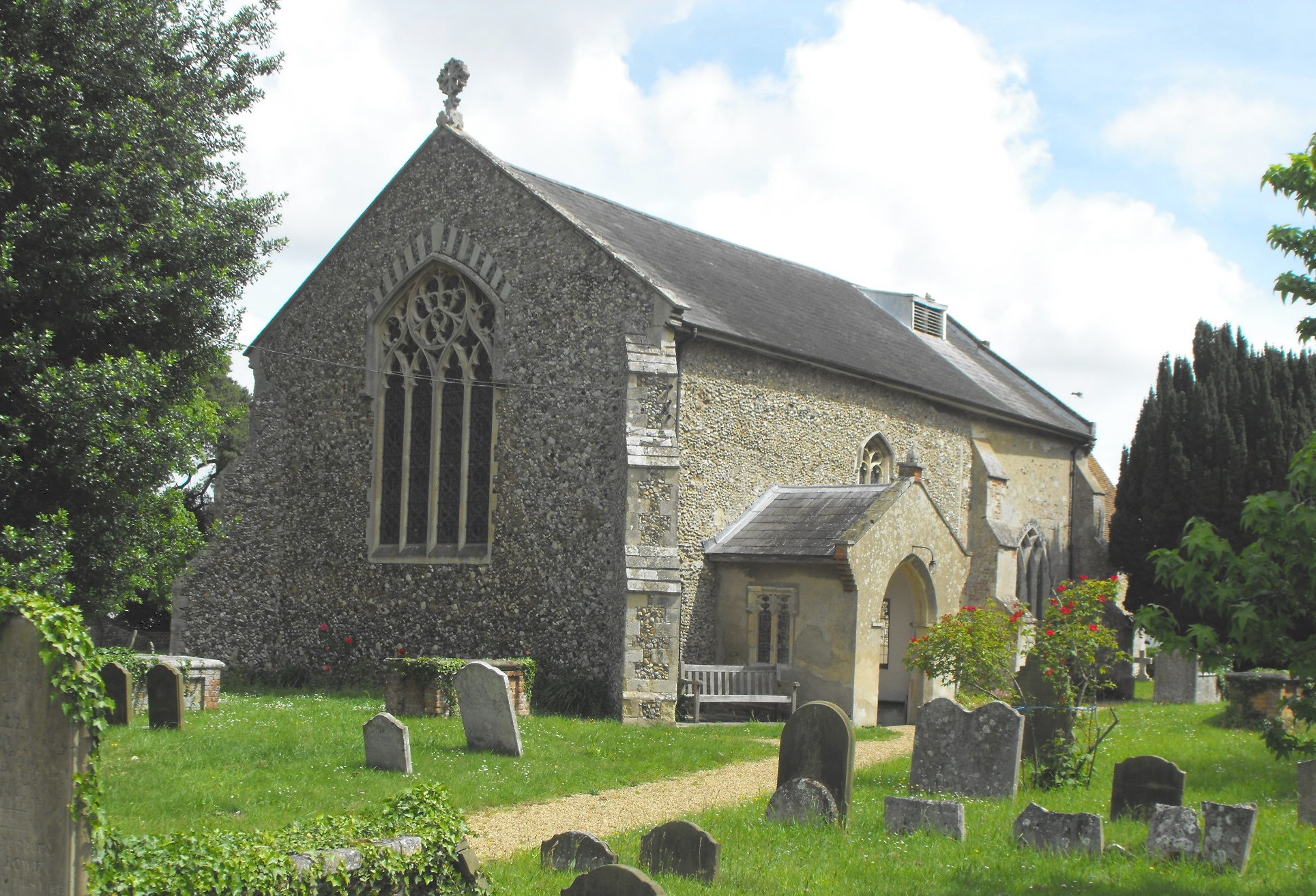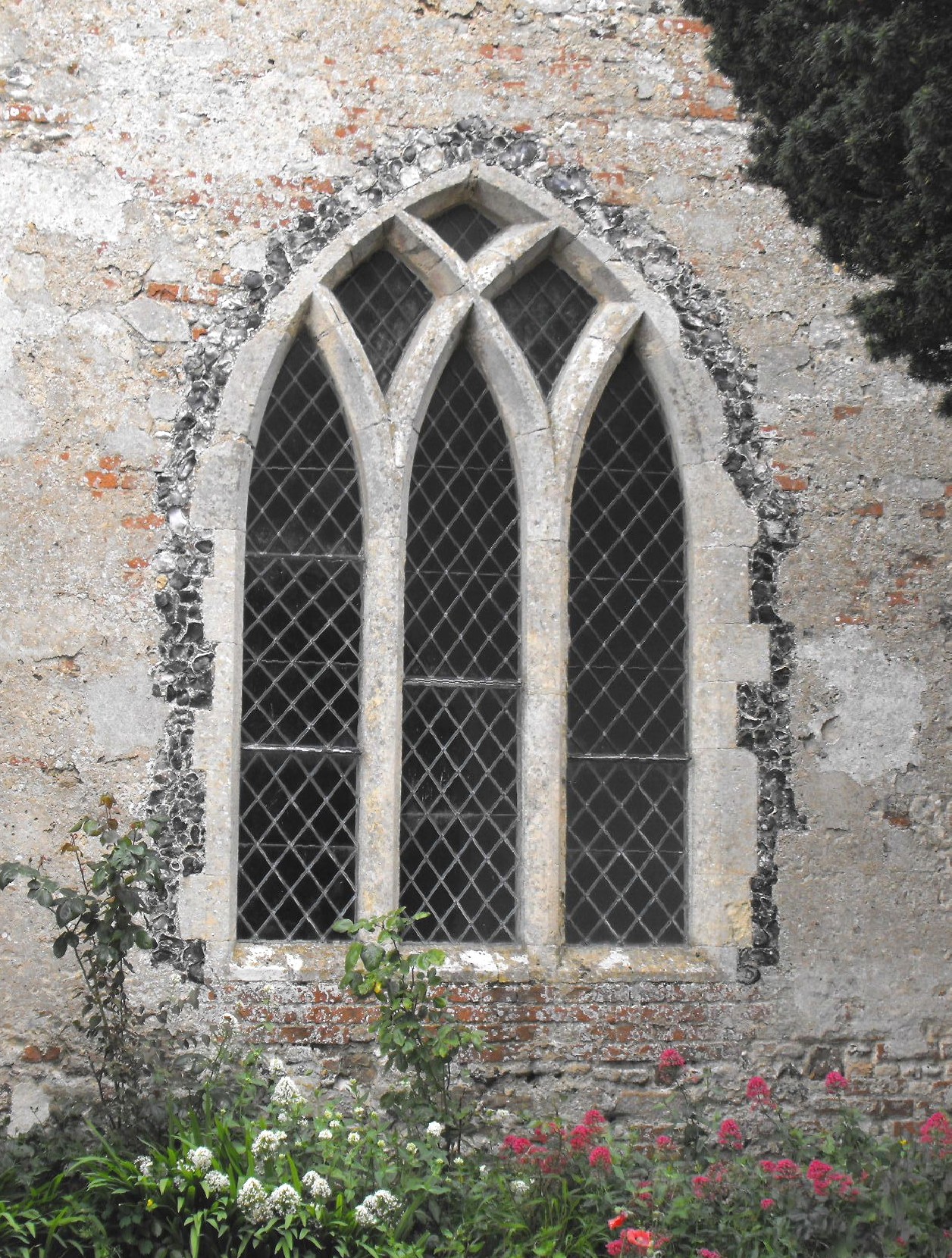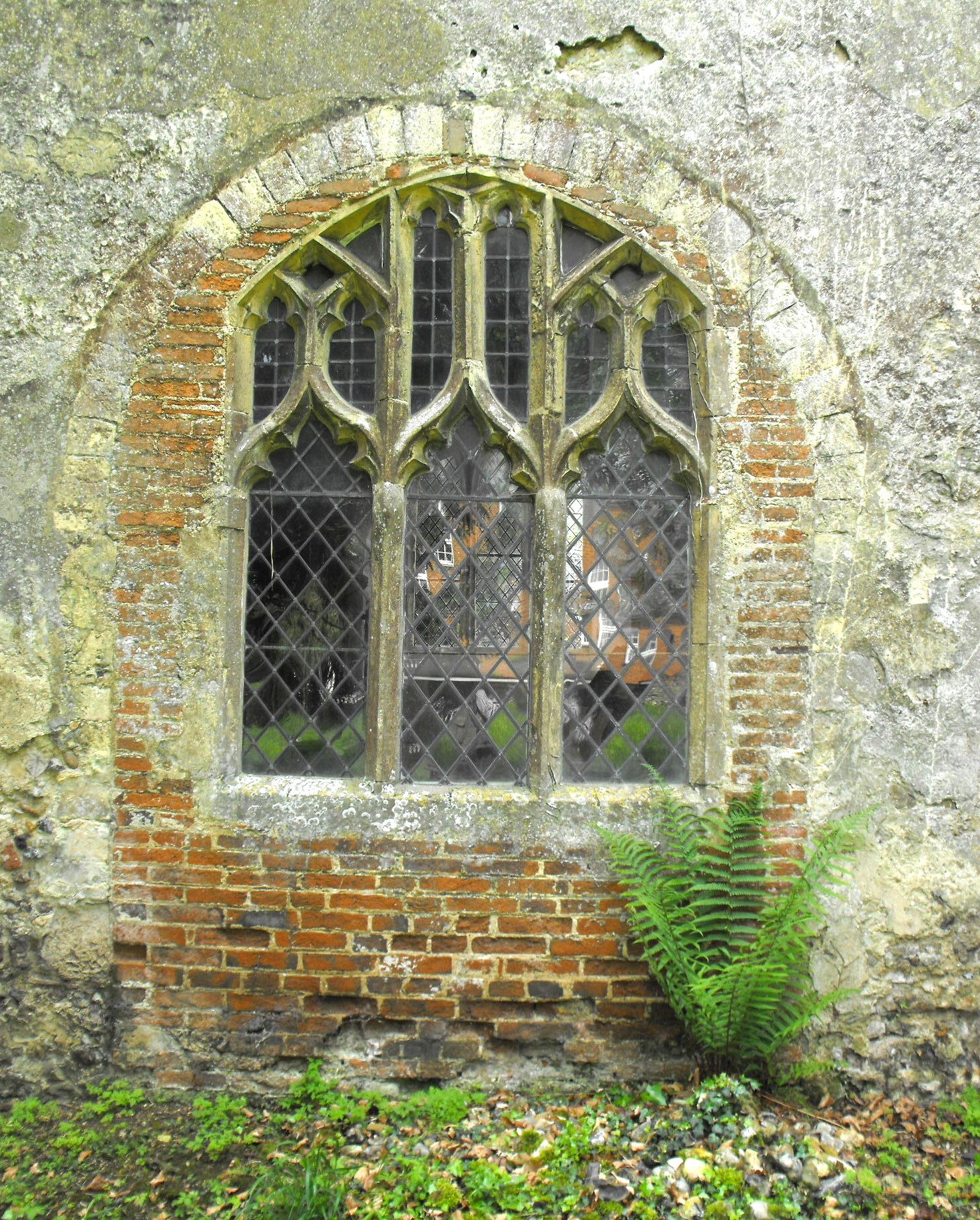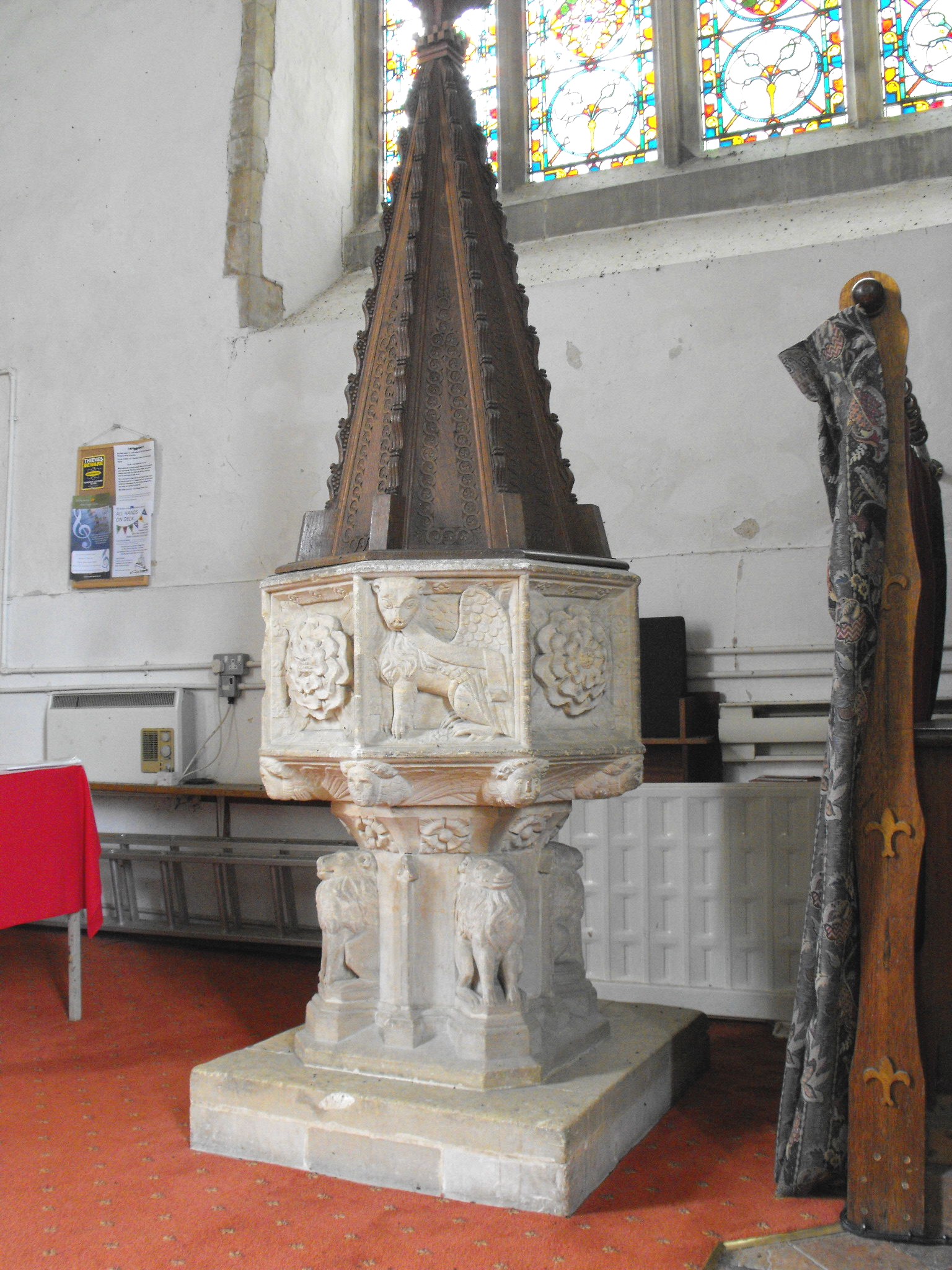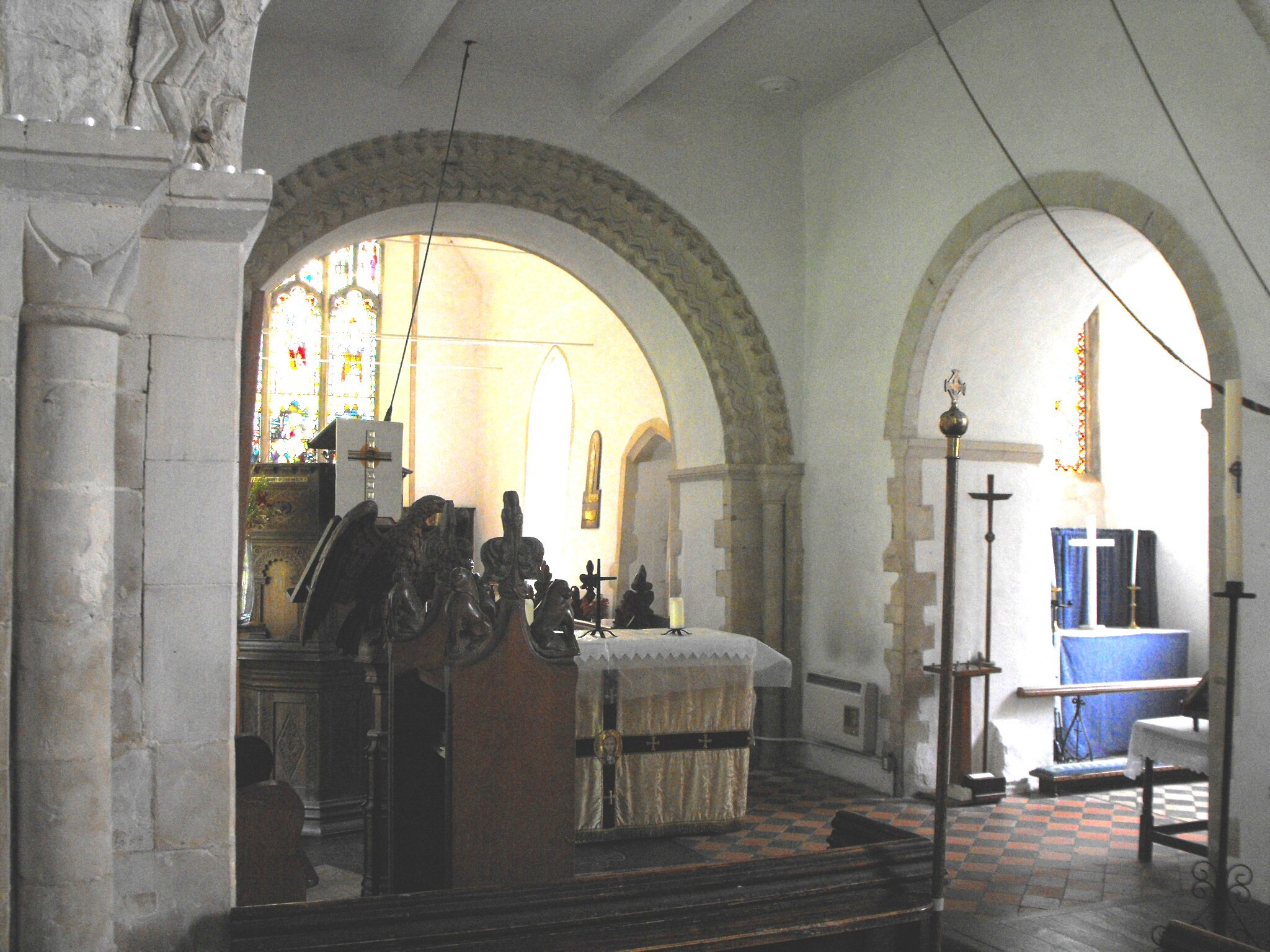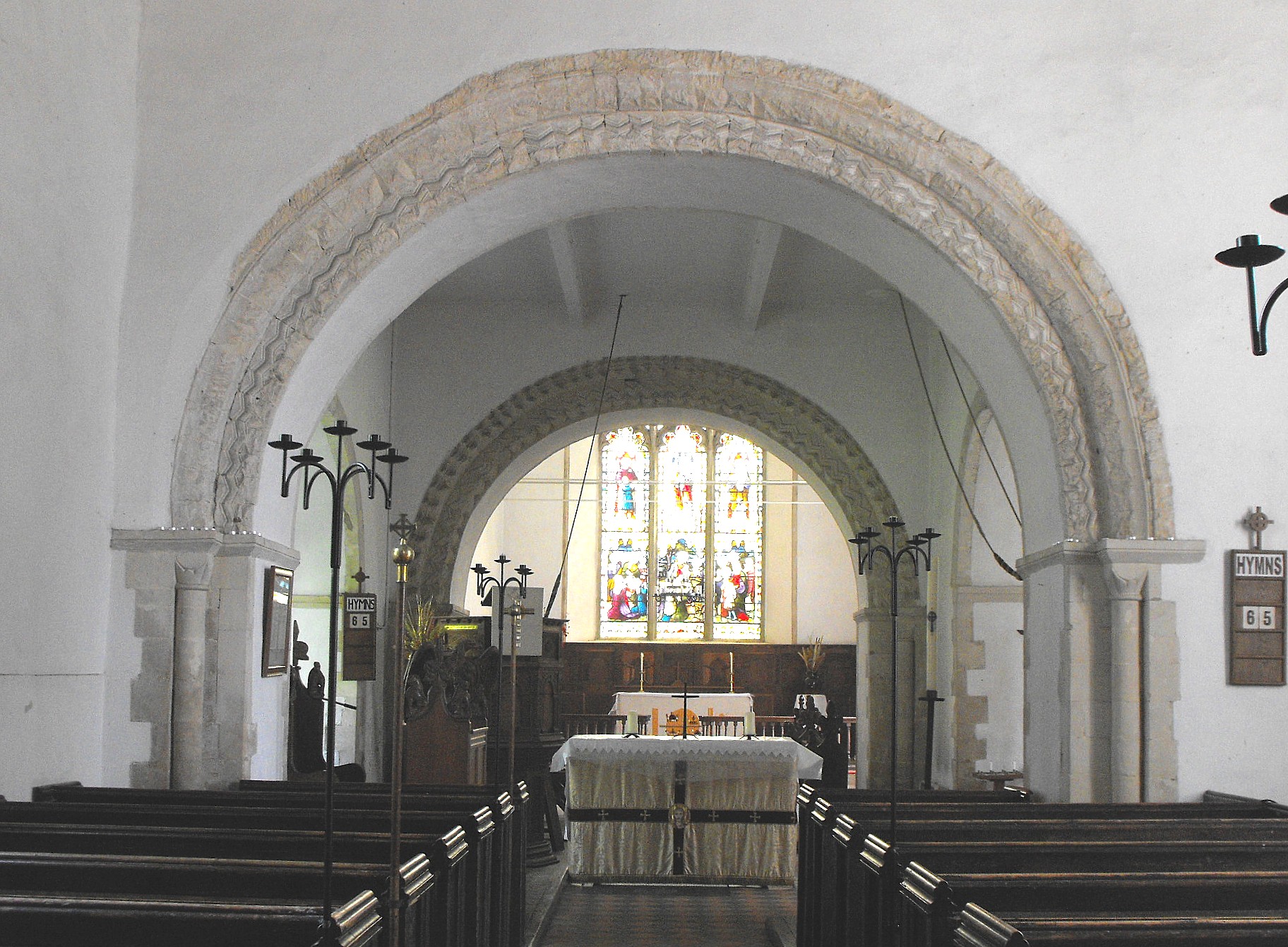|
English Church Architecture.
EYKE, All Saints (TM 317 518), SUFFOLK. (Bedrock: Neogene to Quaternary, Red Crag Formation.)
A far more interesting church than it appears at first glance.
This is a fascinating little building (shown, above left, from the southwest), ostensibly consisting of just a chancel, nave and porch to judge from a superficial external inspection, but actually comprising the remains of a small cruciform church which once had a central tower and transepts. The clue to its real character is the change in the masonry part way along the north wall of the nave, together with the three-light Perpendicular window with supermullioned drop tracery (illustrated below left) inserted in the blocked round-headed arch a few feet to the east. This section of the nave was formerly the crossing before the tower and transepts were demolished - a state of affairs made manifest immediately one enters. A less marked change in the rubble walling can also be made out in the corresponding position to the south, but no other remnants of Norman work can be found outside apart from one tiny window, high up in the chancel N. wall, east of the mean cross-gabled modern vestry, and, just possibly, a large round-headed window in the E. wall of the nave to the south, where it juts out beyond the line of the chancel. Otherwise, the earliest windows in the church are Early English and consist of a renewed lancet and a window with Y-tracery in the S. wall of the chancel, and in particular, a three-light window with intersecting tracery in the S. wall of the former crossing (or, as it now appears, the eastern portion of the nave) (as shown below left). The tall restored windows on either side of the nave, with flowing tracery beneath segmental-pointed arches, are obviously Decorated (but are they too tall to be original?), and the chancel N. and E. windows, the latter with supermullioned drop tracery, strong mullions and a castellated supertransom above the central light, are both clearly Perpendicular. The nave W. window and the porch are the work of Edward Charles Hakewill (1816-72) (D.P. Mortlock, The Guide to Suffolk Churches, Cambridge, The Lutterworth Press, 2009, p. 169), an indifferent architect from an equally indifferent architectural family. The small mediaeval, square-headed windows in the porch have been re-set, and the inner doorway, like the nave N. doorway, carries a series of mouldings above jambs provided only with wide flat chamfers.
The interior of the building is both striking and surprising, for the view to the east is dominated by the low but wide, E. and W. crossing arches (as seen in the photograph at the bottom of the page), each decorated with chevron on two orders, above jambs with an outer order of shafts with cushion capitals. The E. arch is the better preserved since the hood-mould around the W. arch, and its outer order of chevron, give the appearance of having been hacked off. The S. arch and the blocked N. arch are each formed of a single unmoulded order (the S. arch can be seen in the photograph below left, looking across the crossing to the southeast): the S. arch opens into a little chapel which may or may not be part of the original S. transept but seems to have been altered in the late thirteenth century, and viewed from inside the chapel, looking back at the arch, a large round-headed opening can be seen above, which presumably was once one of the tower windows. The round-headed window in the chapel E. wall, might be Norman but looks suspect, and the S. window with intersecting tracery is Early English in style and pat of the alterations. However, why Pevsner should have described the chapel as 'early fourteenth century' in the original 'Suffolk' volume of The Buildings of England (Harmonsdworth, Penguin, 1961) can only be described as a mystery. He did correctly ascribe the widening of the nave to the south to that time, but if he intended to imply the nave and chapel S. walls were contemporary, he certainly made no allowance for the obvious change in the masonry.
The font is octagonal and features the Emblems of the Evangelists alternating with roses around the faces of the bowl and four lion supporters on the stem, separated by buttresses (as shown above right). Most of the wooden furnishings in the church are Victorian, in imitation of mediaeval and Jacobean examples, and Mortlock ascribes them to Archdeacon James Darling, rector from 1893 - 1939. However, the communion rail with turned balusters appears to be Stuart and Mortlock agrees and describes it as 'Laudian' (i.e. in the manner prescribed by Archbishop Laud, Archbishop of Canterbury from 1633-45).
|
